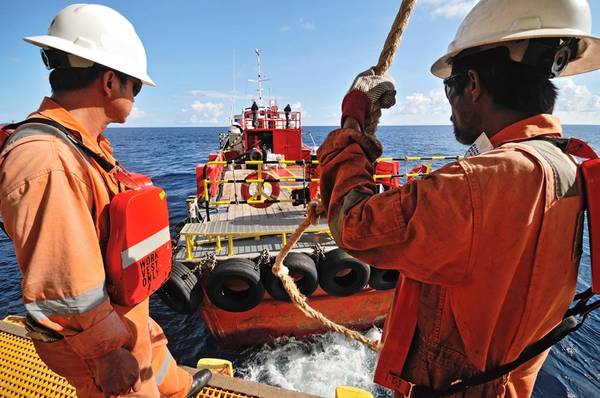
The oil and gas industry’s relentless focus on safety is paying off. Earlier this week, the American Petroleum Institute (API) released its Workplace Safety Report, which revealed occupational injuries and illness for the oil and gas industry occur at a substantially lower rate than for comparable industries in the U.S. private sector.
For example, the oil and gas industry’s 2017 rate of job-related nonfatal injuries and illnesses was 1.7 incidents per 100 full-time workers versus 2.8 incidents for the U.S. private sector, and since 2008, the industry’s incidence rate has decreased by 41 percent compared to a drop in the private sector’s rate of 28 percent over the same period. Notably, the 2017 incidence rate for exploration and production was 1.1 (offshore was 0.6) per 100 full-time workers compared to 1.5 for U.S. mining sector.
According to API spokesman Reid Porter, new and revised industry equipment and safety standards, the establishment of capping and containment companies and standby equipment, as well as the creation of the Center for Offshore Safety (COS) in 2011 have all helped drive the industry’s incidence rate down. The industry-led COS, specifically, “has played a central role in both advancing a culture of safety in offshore operations and providing an important interface with government regulators,” he said.
Another factor, according to Porter, is the industry’s implementation of Safety and Environmental Management Systems.
Debra Phillips, vice president of API Global Industry Services, said the report reflects the industry’s dedication to safe and healthy working environments.
“We continue to enhance our approach to training, prevention and continuous improvement – incorporating advanced technologies, materials and practices as we strive toward our industry-wide goal of zero incidents,” she said.
Porter said the industry’s focus on continuous improvement extends to areas such as The Environmental Partnership, a collaborative effort the U.S. oil and natural gas industry launched last year. The Environmental Partnership promotes information sharing to highlight individual company efforts and technology and encourage improvement in operational practices and technologies.